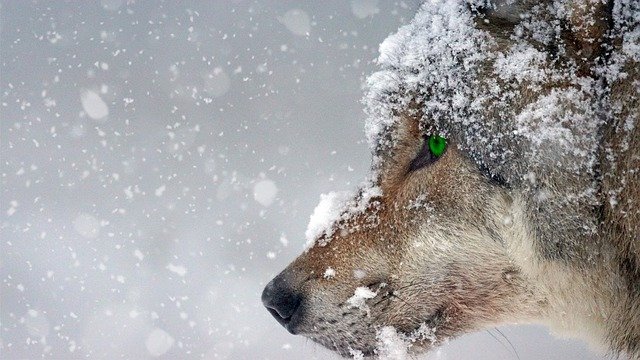His fierce, blood-red eyes glowed menacingly. Its shaggy, hairy body is ready to pounce and its bushy head swings back and forth as it stalks its prey intently. A series of fierce growls and other aggressive sounds came from its mouth full of fangs. What is the demon dog-like creature that rules the countryside in Takikawa, a small Japanese town on the northern island of Hokkaido? Looks like a wolf, but due to its long hunting history, the wolf has been extinct in Japan for over a century. Turns out this creepy beast isn’t even an animal. It’s a robot designed by a Japanese company called Ohta Seiki.
As Takikawa and elsewhere in Japan began to see a dramatic increase in bear sightings, including numerous injuries and even deaths from bear attacks, officials knew one thing had to be done. something drastic. Takikawa residents rarely see bears in their neighbourhood; maybe someone will be watching every few years, so the flow is especially alarming. It seems that bears have invaded the town in search of food before the start of the hibernation season. This is because their typical diet of acorns and nuts is becoming scarce in mountainous areas. This scarcity is most likely the result of the impact of deforestation, which in itself is a larger environmental problem, leading to a decline in the bears’ habitat and food sources. With less food to find near home, hungry bears have no choice but to cross the line into the more inhabited territory to forage.
Takikawa government officials purchased two “Monster Wolf” robots from Ohta Seiki, a company that manufactures high-precision parts. They set up one of the machine wolves in a residential area and planted the other in a suburban field. The purpose of these wolf scarecrows is to drive wild bears from the inhabited territories. The robot wolves contain an infrared motion sensor that, when activated by anything approaching the robot, triggers ghostly movements and sounds. The wolf’s LED eyeballs glow red, its head sways from side to side, and its constant growl reveals sharp teeth. A shrill noise is emitted from the speaker. There are 60 different kinds of shrill sounds that can be heard from a mile away. Sounds include gunfire, howls, dogs barking, machines and the menacing voices of human hunters. The variation of the sound is important so that the bear does not get used to any noise and becomes more daring. The mechanical wolf looks bigger than it really is. It was about four feet long and just over two and a half feet tall. However, firmly fixed on the stands in the field, it has an imposing presence even before sound and motion are activated. And when these automatons are enabled, beware!
The Wolf Monster Project seems to have worked as intended, as the number of bear sightings in Takikawa dropped to zero after installing the robot. Takikawa knew in advance that there was reason to believe the plan would work. In 2016, Wolf Monster was brought to other areas to protect crops and farmland from wild animals such as monkeys, deer and, of course, bears. A video was posted showing the frightened animals running away as the robotic wolf howled and performed its other actions on them. Therefore, Takikawa thinks they are making a smart investment. Other wolf robots have been purchased by several other cities from Ohta Seika and are currently being used throughout Japan in islands from Hokkaido to Okinawa. Different locations may have specific needs for robots.



